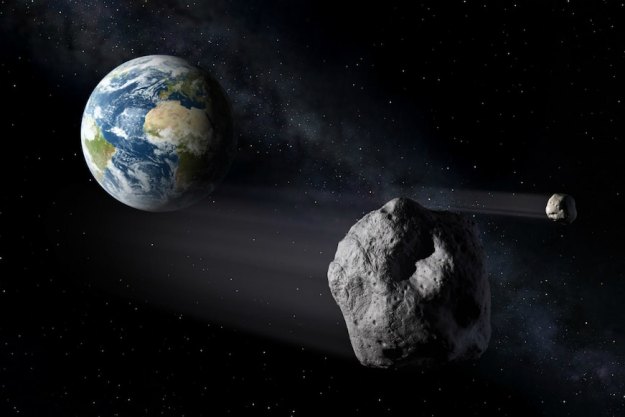This Christmas, an unusual visitor will be swinging through our Solar System: an asteroid shaped like a hippo. The 2003 SD220 asteroid will pass close to Earth this weekend, coming as close as 1.8 million miles from our planet. This event marks the asteroid’s closest approach in more than 400 years, and if you miss it this time you’ll have to wait until 2070 for it to approach Earth any closer.
NASA has shared images of the asteroid which were captured between December 15 and 17 using a combination of telescopes and antennae. The tools used include the 230-foot (70-meter) antenna at the Goldstone Deep Space Communications Complex in California, the National Science Foundation’s 330-foot (100-meter) Green Bank Telescope in West Virginia, and the Arecibo Observatory’s 1,000-foot (305-meter) antenna in Puerto Rico.

The 2003 SD220 asteroid is at least one mile long and has a distinctive ridge that extends 330-feet above the terrain which surrounds it. You can see the ridge at the top of the asteroid in the third image above. It was possible to see the ridge and other features of the asteroid in great detail thanks to the powerful telescope used which provided high resolution images. “The radar images achieve an unprecedented level of detail and are comparable to those obtained from a spacecraft flyby,” Lance Benner of the Jet Propulsion Laboratory (JPL) and leading scientist at the Goldstone complex explained. As well as the ridge, “Numerous small bright spots are visible in the data and may be reflections from boulders. The images also show a cluster of dark, circular features near the right edge that may be craters.”
As well as using this data to understand more about asteroids and their geology, the science community has been having some fun with the shape of 2003 SD200. When announcing the images, NASA’S JPL twitter account asked “Do you want a hippopotamus for Christmas?” Though some biologists have disagreed, saying that the asteroid looks more like a giant paramecium, a single celled organism found in marine environments. We leave it up to you to decide what kind of creature the asteroid most resembles.
Editors' Recommendations
- NASA and Russian satellites just miss in ‘too close for comfort’ pass
- NASA’s Lucy spacecraft will soon make its first flyby of an asteroid
- Watch NASA’s capsule with asteroid samples hurtling to Earth
- Asteroid the size of Statue of Liberty about to zip by Earth
- An asteroid is making a close approach to Earth, and scientists are pumped



